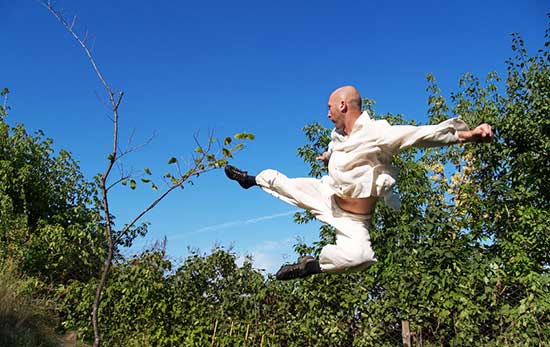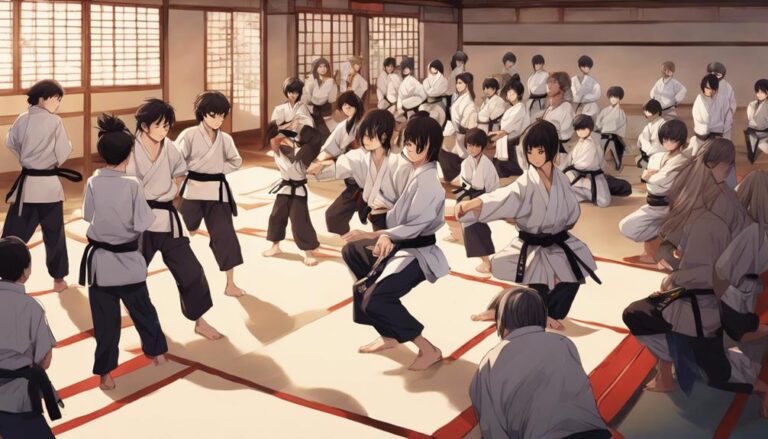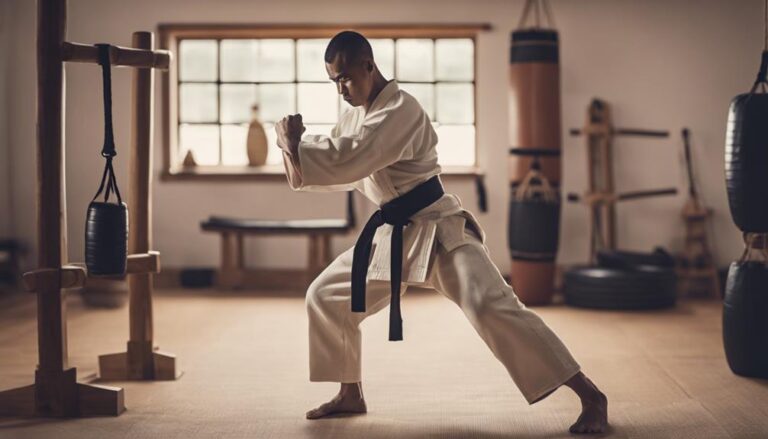You might not be aware, but integrating advanced drills into your Wing Chun practice can significantly alter your comprehension and execution of core techniques.
By focusing on intricate movements, such as transitioning smoothly between tan sau, pak sau, and bong sau, you’ll cultivate a deeper understanding of deflection and strike mechanics.
This approach not only refines your arm positioning but also ensures a balanced development across all aspects of your training.
As you explore these advanced drills further, you’ll uncover the subtle nuances that can elevate your Wing Chun skills to new heights, preparing you for more complex challenges ahead.
Contents
Mastering the Siu Nim Tau
To master the Siu Nim Tau, you must first focus on building a solid foundation in proper structure, relaxation, and centerline control. This initial form of Wing Chun isn’t just about memorizing movements; it’s about developing sensitivity, coordination, and internal energy through slow, precise motions.
You’ll learn to harness proper breathing techniques and sharpen your mental focus, critical for martial arts applications. Siu Nim Tau is key to developing muscle memory and promoting efficient techniques, laying the groundwork for advanced Wing Chun skills.
Mastery of this form is essential for grasping the core principles of Wing Chun and progressing to higher forms and techniques. Remember, perfection in Siu Nim Tau sets the stage for all subsequent learning in Wing Chun.
Perfecting the Chain Punch
Once you’ve laid the foundation with Siu Nim Tau, it’s crucial to focus on perfecting the chain punch, a core technique in Wing Chun known for its rapid, relentless strikes aimed at the opponent’s centerline. This hallmark of Kung Fu demands you to master body mechanics and coordination.
Initiate each punch from your center, ensuring a straight path toward the target. Your fist must rotate at the end of each strike, priming your hand for the next punch with minimal withdrawal. Repetitive training is essential; it sharpens your speed, accuracy, and timing.
Drill in short bursts to hone precision, gradually increasing speed without sacrificing form. Remember, perfection in the chain punch isn’t just about throwing punches faster; it’s about seamless coordination and unyielding focus.
Elevating Chi Sau Skills
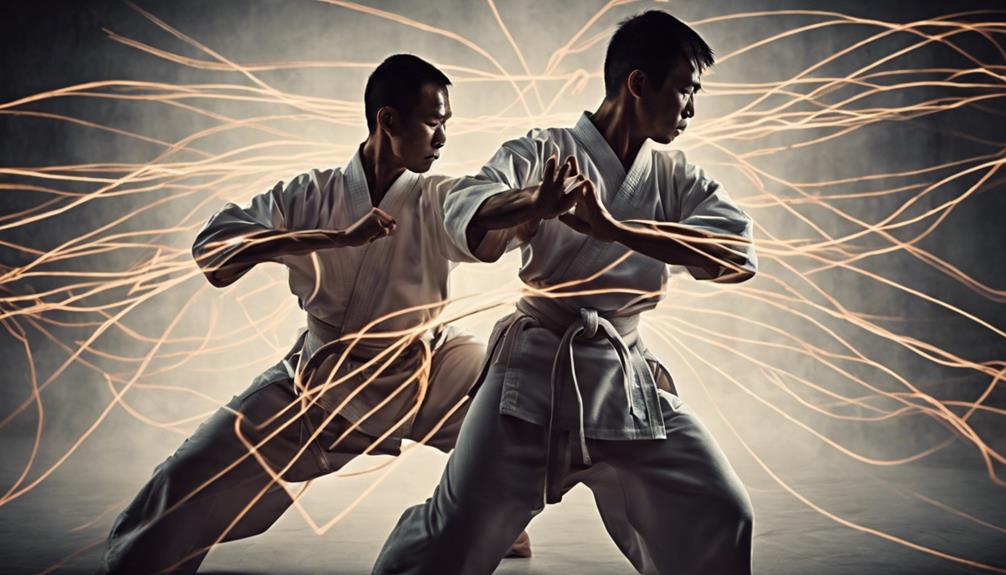
After mastering the chain punch’s fundamentals, elevating your Chi Sau skills becomes the next critical step in advancing your Wing Chun prowess.
As martial artists, developing your Chi Sau technique is essential for enhancing sensitivity, timing, and reflexes, crucial components in close-quarters combat. Through diligent practice, you’ll learn to interpret your opponent’s energy and intentions via tactile feedback, enabling efficient counterattacks and defense.
Chi Sau drills should focus on promoting relaxation and adaptability, allowing for seamless transitions between techniques. By pressure testing your skills and deepening your understanding of Wing Chun principles, you’ll improve your trapping and controlling abilities.
This advanced level of Chi Sau practice ensures you’re not just reacting, but strategically controlling the engagement with precision and skill.
Enhancing Footwork Agility
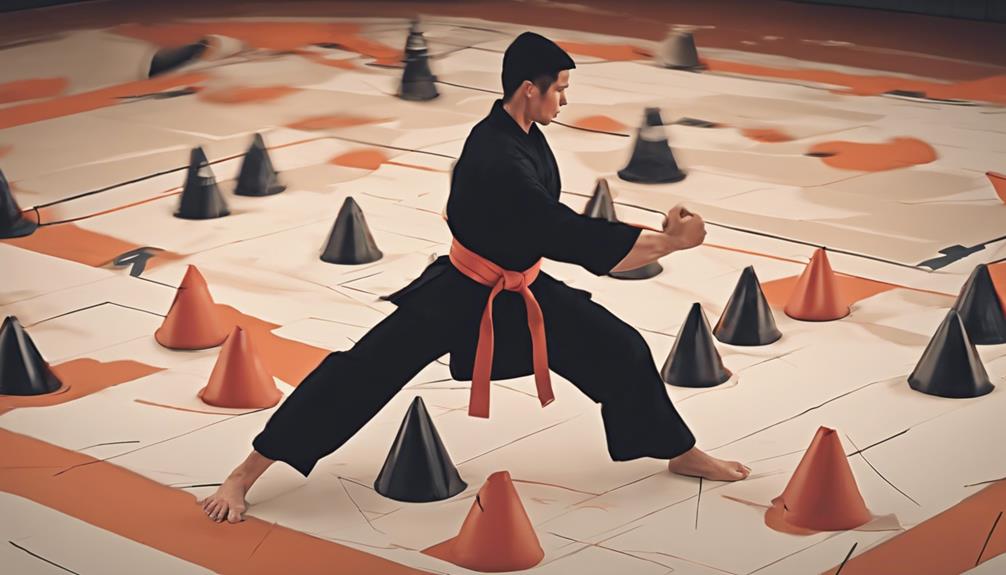
Mastering footwork agility is essential for any Wing Chun practitioner seeking to enhance their balance, speed, and control in combat situations.
As you aim for the black belt, understanding that footwork agility in Wing Chun isn’t just about moving your feet quickly, but about how you maintain balance, speed, and control during combat is crucial.
Through practicing advanced footwork drills that focus on pivoting, stepping, and shifting, you’ll create angles and openings for attacks, while also enhancing your evasive maneuvers. This involves developing a keen sense of adaptability in various fighting scenarios, allowing for seamless transitions between offensive and defensive stances.
Consistent training allows you to anticipate and respond effectively to your opponent’s movements, a skill that’s indispensable on your path to mastery.
Refining Defensive Techniques

Building on your enhanced footwork agility, it’s crucial to refine defensive techniques such as tan sau, pak sau, lop sau, and bong sau for effective defense in Wing Chun.
You’ll need to focus on precise hand positioning and timing to intercept and redirect attacks efficiently. It’s essential to maintain structure and alignment during these movements to maximize efficiency.
Drill the transitions between different defensive techniques to seamlessly flow from one to another in response to varying attacks. Incorporate partner drills to simulate realistic combat scenarios, testing the effectiveness of your refined defensive techniques.
This approach ensures that you’re not just practicing movements in isolation but are preparing for real-world application, where timing, precision, and adaptability are key.
Conclusion
In conclusion, mastering your Wing Chun techniques requires dedicated practice and a focus on advanced drills.
By refining your Siu Nim Tau, perfecting your chain punch, elevating your Chi Sau skills, enhancing your footwork agility, and refining your defensive techniques, you’ll significantly improve your combat effectiveness.
Remember, it’s crucial to practice these drills consistently, ensuring balanced development on both sides.
With precision and dedication, you’ll advance your Wing Chun skills and become more adept in real-life sparring situations.


